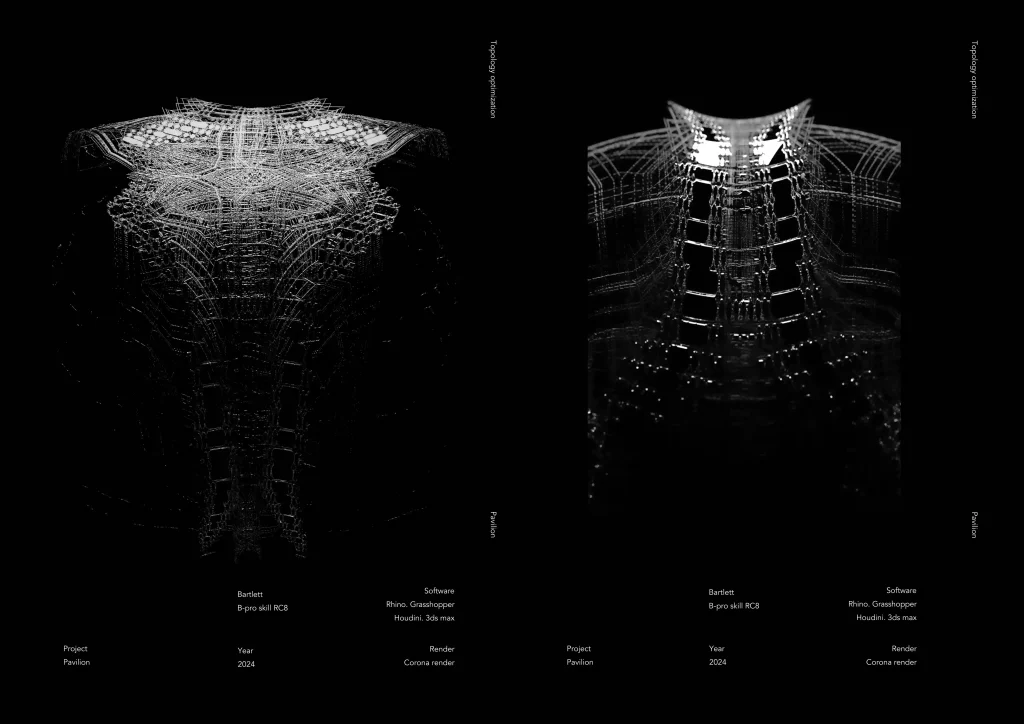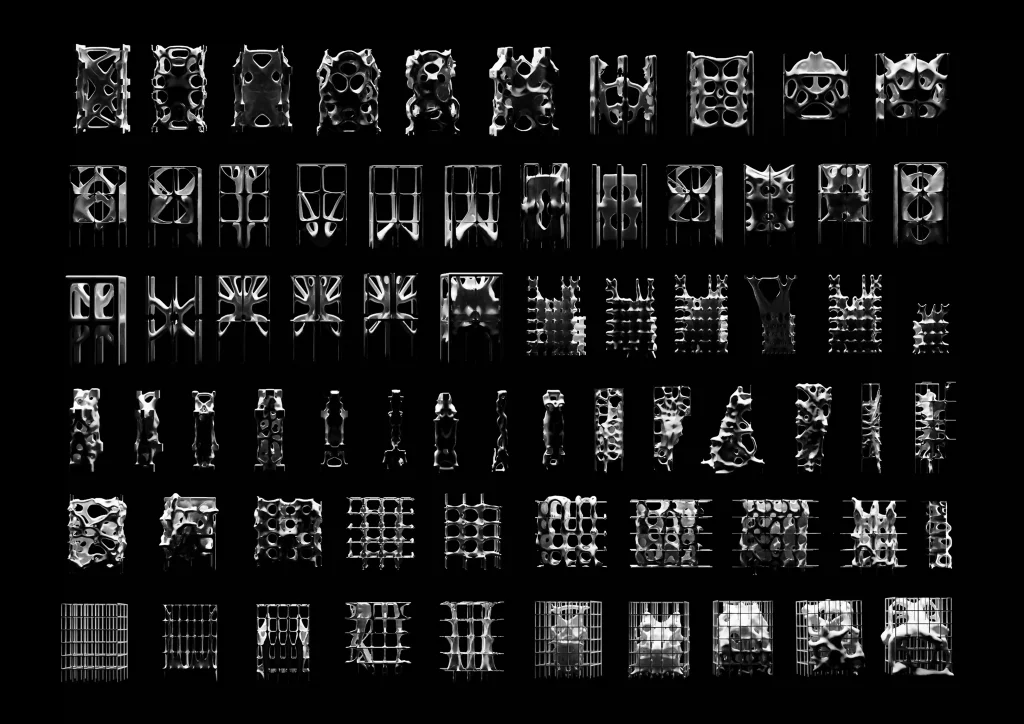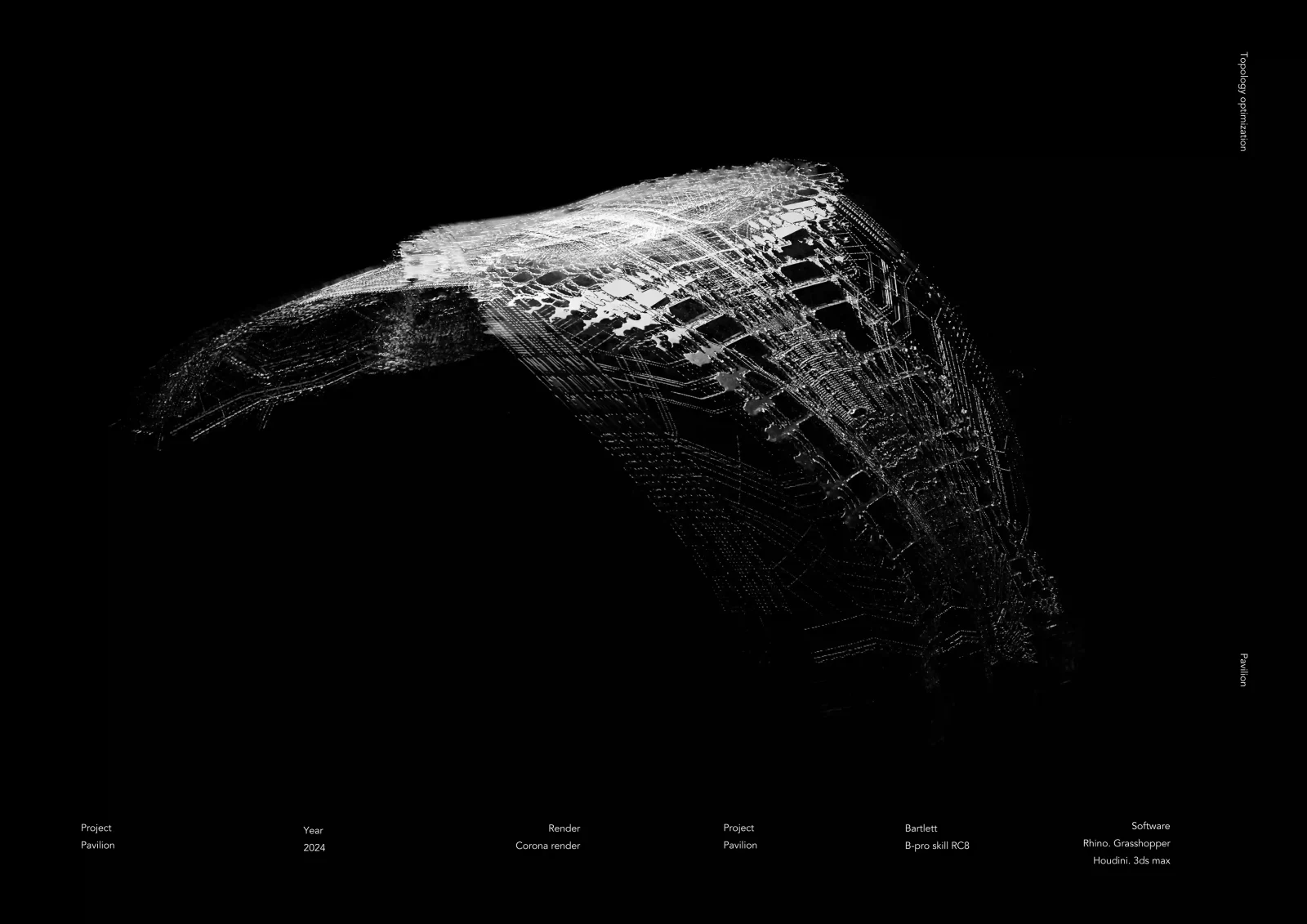Exoskeleton is an experimental architectural pavilion that integrates generative AI and topology optimization to enhance structural strength and material efficiency, resulting in lightweight, patterned skins. This research was conducted within The Bartlett School of Architecture, University College London, as part of the Architectural Design MArch’s Research Cluster 8, under the guidance of Kostas Grigoriadis and Alvaro Lopez. The theory tutor was Ilaria Di Carlo, and the skills tutors were Samuel Esses and Hanjun Kim.

Designed through generative AI and topology optimization, an intricate pattern of force and stress flow aligned with structural forces is embedded onto the surfaces. This computational logic produces skins that are both visually compelling and structurally efficient. By analyzing stress flow and porosity, the study aims to improve material distribution and structural performance.
Biomimicry and Adaptive Structural Design
The design draws inspiration from the morphological and structural principles of arthropod exoskeletons, which optimize strength while minimizing material use. By studying their load distribution and geometry, a procedural workflow was developed to simulate and apply these characteristics in architectural structures. The internal geometry adapts through a load-responsive process, varying in density and orientation according to strain levels. This adaptive behavior integrates structural efficiency with aesthetics, resulting in architecture that performs as well as it appears.

To evaluate structural efficiency, a topology optimization process was used to simulate strain levels across the structure and dynamically adjust material density and orientation, ensuring material is used only where necessary. A distributed load was applied over an anticlastic shell, with fixed supports at the base. The pattern and structure were arranged along principal stress lines, with thickness and topology adjusting dynamically in response to applied stress.
Stress analysis was conducted to further refine the design, using stress line evaluations as the foundation for the base geometry. The optimized form was achieved through topological optimization experiments, balancing scalability and precision while maintaining structural integrity.
Prototyping the Exoskeleton’s Structural Components
A series of experiments on structural elements was conducted to establish the design methodology. Further application focused on optimizing load-bearing elements such as columns and slabs under various conditions.

By analyzing stress flow and porosity, the study aimed to improve structural performance and material efficiency. The approach included testing multiple design iterations of columns and slabs under different loading conditions, while accounting for various constraints. The process involved stress flow analysis, porosity optimization, and assessments of how connections between structural components influence overall performance.

Exoskeleton Project Details:
Designer: Cheng-Wei Lee
Software Used: Rhinoceros3D, Grasshopper3D, Autodesk 3Ds Max, Vray, Others
Project Year: 2024
Unbuilt





























Leave a comment